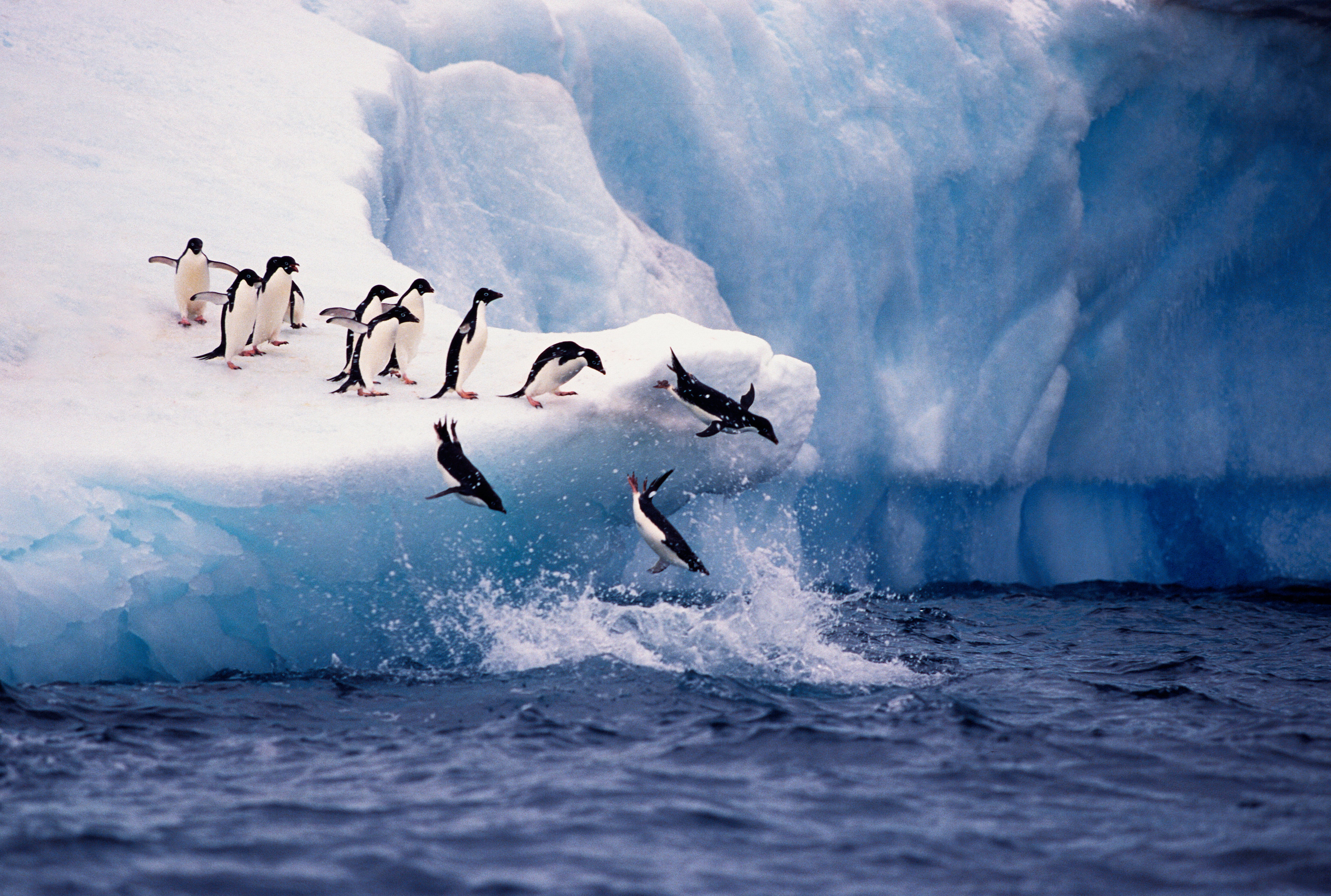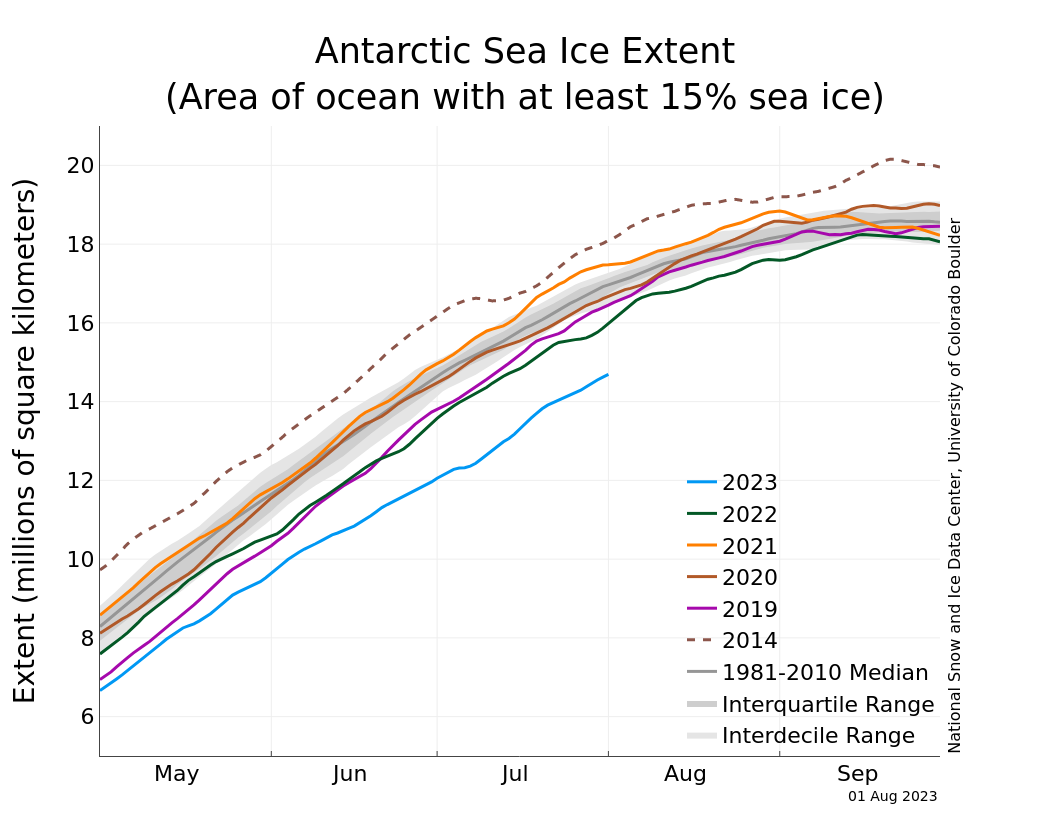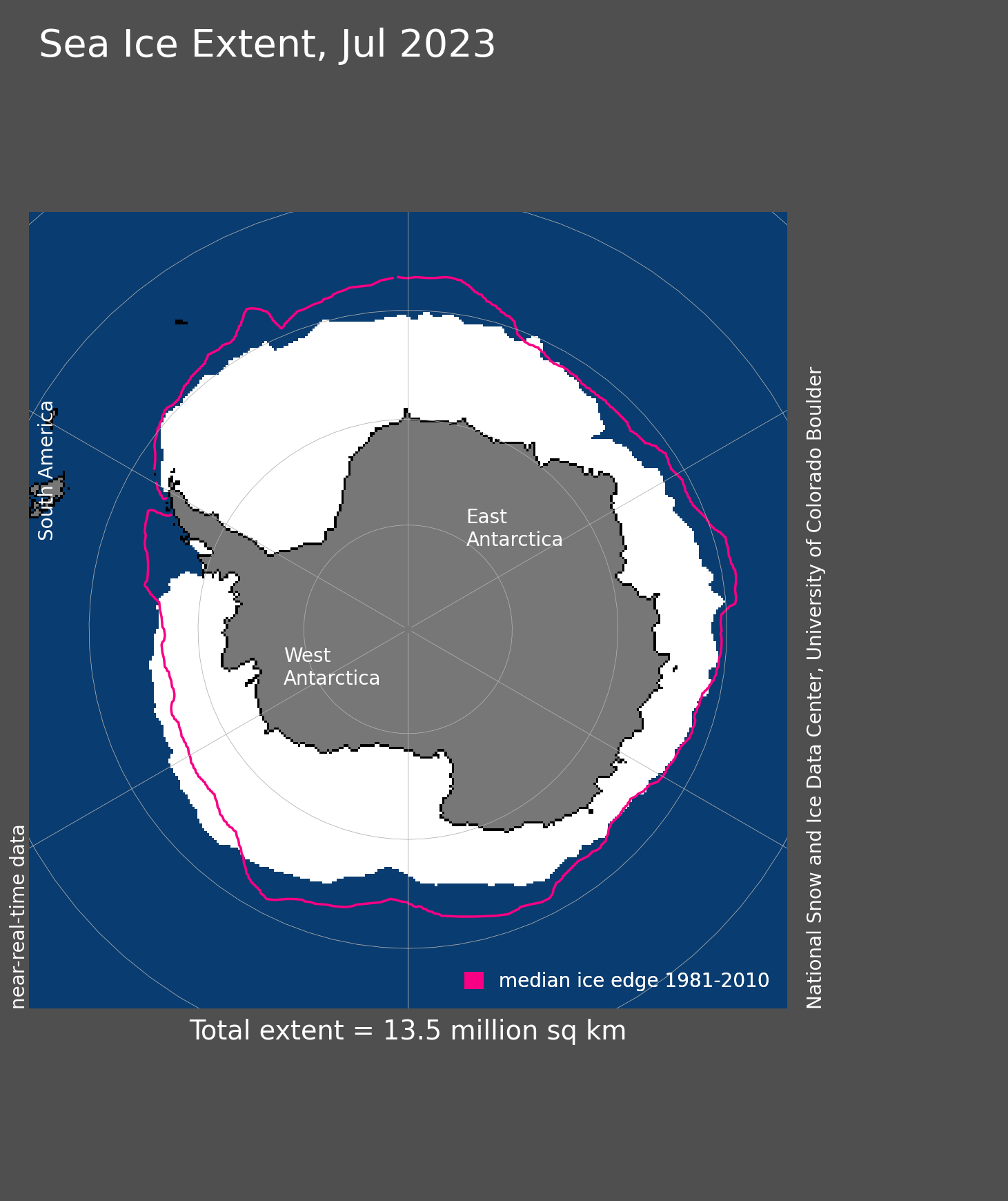Antarctica is missing an area of sea ice the size of Greenland — what’s going on?
The alarming and colossal disappearance of sea ice formation in Antarctica has left experts ‘astonished’. Harry Cockburn reveals the consequences for humans and species


Even in an era of alarming climate records, a worrying slew of milestones has already been passed in 2023 as our planet warms.
But amid the apocalyptic scenes wrought by extreme weather across Europe, Asia and North America, perhaps the most alarming global climate event is occurring around Antarctica, where sea ice formation has hit a record low – and by a colossal margin.
It is now deep winter in the southern hemisphere; most of Antarctica is plunged into darkness for several months and the vast tracts of sea ice that fringe the continent’s coast are usually expanding out over the open ocean.
But this year, sea ice formation has dropped off a cliff. The continent is currently missing an area of ice larger than Greenland.
“It’s not just a record, it’s a ‘hit out of the ball park’ type thing,” says Caroline Holmes, a polar climate scientist at the British Antarctic Survey. “It really is very different.”
While sea ice depletion in the northern hemisphere has been a worrying marker of human impacts on the planet for decades (the lowest level of ice measured in the Arctic was in 2012), in Antarctica a different story has been unfolding: despite global average temperatures rising, Antarctic winters were still producing massive amounts of sea ice. In fact, the amount of ice around the continent had been slightly rising until 2015. However, over the past seven years, there has been an abrupt reversal in the trend.
“If you look at a graph for a normal year you’d see this steep increase in how much ice forms between February and November,” says Holmes, “particularly at this time of year.”
“If you plot that annually, you can see a tight cluster of lines showing how sea ice grows each year. Then if you looked just at 2022, you’d see that it was at the bottom of those lines – just at the bottom. It didn’t look like it stood out, but it was the lowest ever. If you add this year, you can see it is a long way below anything we’ve seen since we started these measurements in 1979.”
Figures reveal that sea ice extent in July was 15 per cent below the long-term average. Last year, which was already a record low, was about 6 per cent below the long-term average. More than two million square kilometres of ice have failed to freeze.
“If you took an average of sea ice extent around the coast, the sea ice would extend around 1,000km out from the coast, but this year the recordings mean it’s about 100km further back than in a ‘normal’ year,” Holmes says.
“People are astonished. People who have worked in the field for decades in some cases are really saying this is shocking.”
Using modelled datasets that go back 120 years – well before satellite technology – there is still no precedent for the low levels of ice we are currently seeing.

It is hard to overstate the scale of the anomaly. Data collected since 1970 indicates the likelihood of such a major decline in sea ice would be a once-in-7.5-million-years event if the world’s climate hadn’t changed.
However, Dr Holmes warns that current data may still not be telling us enough about how sea ice extent can behave naturally. “There is reason to think – looking at proxy records and other deductions, and models – that the records don’t show us everything and it is natural to have periods when sea ice levels are lower.”
As a result, scientists are unable to definitively point the finger at man-made climate change, despite the strong indication this is a major part of the picture.
The record low ice comes as average sea surface temperatures remain on a record-setting high which began in May this year. On 1 August ocean surface temperatures surpassed an all-time high of 20.96C – far above average for the time of year and hotter than the previous record set in March 2016, according to the EU Copernicus Climate Change Service.
The measurements, taken between latitudes of 60 degrees North and 60 degrees South, are designed to exclude the areas usually affected by sea ice and indicate the scale of the energy being absorbed by the open oceans. While global warming models predict rising ocean temperatures, the scale of the anomaly this year is prompting additional research to understand why such a leap has occurred around the world.
What might the impacts be of rapidly-declining sea ice?
Sea level rise
An obvious concern for humans is the threat of rising sea levels. If a strengthening pattern of sea ice loss occurs, this could have major ramifications for billions around the world.
Sea ice may be a relatively thin layer, but it provides a considerable “buffering” effect on waves, protecting Antarctica’s ice shelves from more rapidly disintegrating and melting in rough seas.
The ice shelves, which can tower over the sea up to 600 metres in thickness, are the floating extensions of glaciers on the Antarctic mainland. Increased exposure to open water means the ice shelves could break up more quickly, in turn speeding up glacial flow into the sea, leading to sea level rise.
For example, the Thwaites glacier in western Antarctica, sometimes known as the “doomsday glacier” is roughly the size of Britain at 74,000 square miles and has one of the largest ice shelves but is also considered one of the continent’s most unstable. It already accounts for 4 per cent of global sea level rises and has the potential to raise global sea levels by two feet.

Antarctica accounts for vast quantities of ice – around 90 per cent of all ice in the world – with the ultimate capacity to raise sea levels by around 70 metres if it were all to melt. However, the last time Antarctica was ice-free was at least 34 million years ago when atmospheric concentrations of carbon dioxide were above 760 parts per million (ppm) and temperatures were about 4C higher than they are today – conditions believed to still be millennia away from occurring again, if at all.
Hitting tipping points
Continued loss of sea ice could also cause a worsening feedback loop, locking in further global warming. This is because the high reflectivity, or albedo, of a white, ice-covered surface reflects a considerable quantity of the sun’s energy back into space.
Without the ice, the dark energy-absorbing open ocean is instead directly exposed to the sunlight, which in turn warms the ocean, further impeding ice formation.
The same process is already occurring in the northern hemisphere and is one of the clearest reasons for the Arctic amplification phenomenon, in which the Arctic is warming at a far faster rate than the global average. With less sea ice, the same process could begin to occur in the southern hemisphere.
Impacts on biodiversity
Loss of sea ice could have devastating impacts on one of the world’s most biodiverse regions. Furthermore, the challenges of living in the inhospitable conditions of the southern ocean mean most species have evolved specific adaptations suited to the environment.
Changes to sea ice distribution will impact marine species through altering levels of light in the ocean, how salinity and current changes move nutrients around and also the sea ice as a habitat in its own right. Penguins and seals depend on sea ice, while it also provides hunting grounds for other animals such as killer whales.
Ice is also a key resource for smaller organisms such as plankton and krill that play a major role in the food chain.
“We know that sea birds such as albatrosses and seals – in particular fur seals – have population cycles with good years and bad years, and that is linked with the availability of krill in the Southern Ocean,” says Katrin Linse, senior biodiversity biologist at the British Antarctic Survey.
“Whales feed on it and you have patches with hundreds of millions of krill swimming around. The biomass of krill is only slightly less than the biomass of humans on Earth. They are really abundant, but the krill are dependent on sea ice – there’s a period in their lifecycle when they are juveniles when they need to be beneath the sea ice.
The missing sea ice will affect krill, and birds and whales, Dr Linse says. “Over the last decade, numbers of blue whales, fin whales and minke whales have all come back up – as their recovery builds following the decline of whaling – and they come to particular areas in the Southern Ocean to feed on the huge numbers of krill, ahead of their breeding season.
“The biodiversity [in Antarctica] is complex,” she says “We are talking about 700 pelagic species (those dwelling in the open ocean) and 8,500 described benthic (sea-floor) species and a further 8,000 others that live in the Southern Ocean and depend in one form or another on the environmental conditions [of which the] sea ice plays a major part.”
“In short words, I expect a decline in pelagic and benthic biodiversity,” she says.
“We have some penguin species that only breed on the sea ice – emperor penguins and Adélie penguins. If we have no sea ice left. We don’t know where they would breed. We don’t know what would happen.”
Join our commenting forum
Join thought-provoking conversations, follow other Independent readers and see their replies
Comments
Bookmark popover
Removed from bookmarks